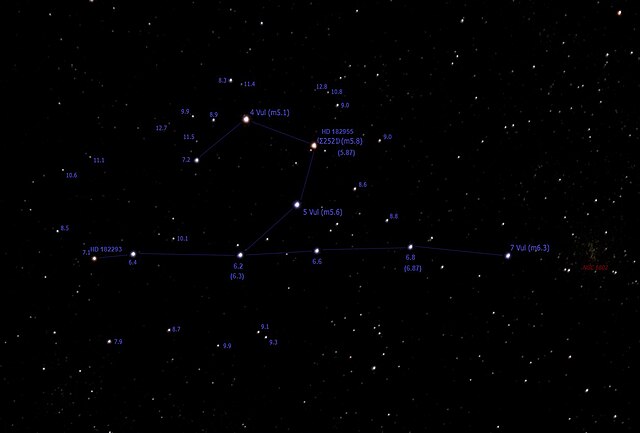Brocchi's Cluster is a asterism of 10 stars. Six of the stars appear in an row, across 1.3° of the night sky. The cluster is in the south of the constellation Vulpecula, near the constellation Sagitta. Its nickname is the Coathanger. None of these ten stars are believed to be gravitationally bound to each other, thus they are not a star cluster, a fact established by the Hipparcos measurements 1997. An additional 30 or so much fainter stars are considered by some to be part of the asterism.
Amateur image of an asterism Collinder 399 and surroundings
The Coathanger (Cr 399); eight of its ten stars are labelled with at least their observed (apparent) magnitudes, as is the open cluster on the same alignment of the row of six (and centred with a similar angular separation to that of these stars) just east. The westernmost star has a smaller separation than the others.
An asterism is an observed pattern or group of stars in the sky. Asterisms can be any identified pattern or group of stars, and therefore are a more general concept than the 88 formally defined constellations. Constellations are based on asterisms, but unlike asterisms, constellations outline and today completely divide the sky and all its celestial objects into regions around their central asterisms. For example, the asterism known as the Big Dipper comprises the seven brightest stars in the constellation Ursa Major. Another is the asterism of the Southern Cross, within the constellation of Crux.
A picture of stars, with a group of appearingly bright blue and white stars. The bright stars together are identified as the asterism Coathanger resembling a coathanger, in the constellation Vulpecula.
Three Leaps of the Gazelle asterism
The "Teapot" asterism in Sagittarius. The Milky Way appears as "steam" coming from the spout.
The "37" or "LE" of NGC 2169, in Orion. It is visible with binoculars.





